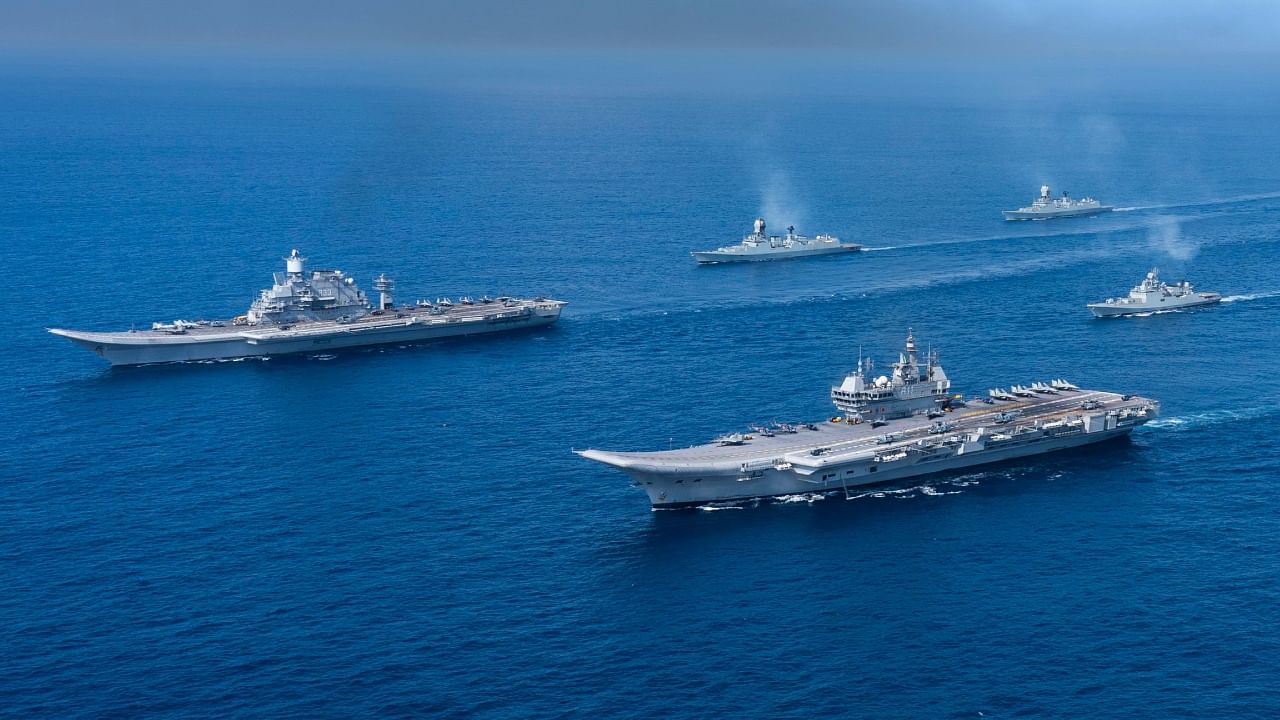
Amidst tension with China along the northern borders, the Indian Navy has carried out its first exercise in recent years with two new aircraft carriers – INS Vikramaditya and INS Vikrant – along with 35 aircraft and other warships to demonstrate its maritime muscles in the Indian Ocean region.
The power projection in the Arabian Sea involves MiG-29K fighter jets that operated from the carrier’s decks and a wide array of choppers ranging from the new MH60R to older generation Kamov, Sea King and Chetak besides the homegrown advanced lightweight helicopters.
“INS Vikramaditya and INS Vikrant were the centre-pieces of the exercise, serving as 'floating sovereign airfields' and providing a launch platform for a wide array of aircraft. Such mobile bases can be positioned anywhere allowing increased mission flexibility, timely response to emerging threats and sustained air operations to safeguard the national interests,” said an official.
“In addition, they provide our friends with an assurance that the Indian Navy is capable and ready to support our 'collective' security needs in the region,” he said. The navy didn’t disclose the dates of the exercise but maintained it was conducted “recently”.
The successful demonstration of simultaneous operations by two carrier battle groups serves as a testament to the pivotal role of sea-based air power in maintaining maritime superiority, a navy spokesperson said in a statement.
A significant milestone in India’s pursuit of enhancing maritime security and power projection as a blue water navy, the exercise involved the seamless integration of two aircraft carriers along with a diverse fleet of ships, submarines and aircraft. For INS Vikramaditya, the drill comes after almost two years spent on refit.
The mega war game comes in the backdrop of the prevailing conflict between Indian and Chinese troops along the Line of Actual Control. Both nations have deployed thousands of troops to guard the disputed boundary.
On the maritime front, the Indian Navy wants to establish its supremacy and emerge as the net security provider in the region while keeping an eye on important sea lanes of communications.
But there has been stiff competition from China’s People’s Liberation Army Navy, which is building such floating airfields aggressively.
In December 2019, the PLAN commissioned its first domestically built aircraft carrier, Shandong, which was launched in 2017 and completed multiple sea trials during 2018-2019.
China’s second home-built carrier is projected to be operational by 2024 and work is going on the third carrier, which would be having a displacement of 85,000 to 100,000 tonnes. The communist country plans to build even bigger carriers with nuclear propulsion to match the USA’s 11 carrier battle groups, each of which is centred around a Nuclear-powered aircraft carrier.
The Union government, however, is yet to approve a third aircraft carrier that was first envisaged nearly 40 years ago in the Indian Navy Perspective Plan 1985-2000. Subsequently, every such plan reiterated the idea, but the government didn’t commit due to cost factors.
